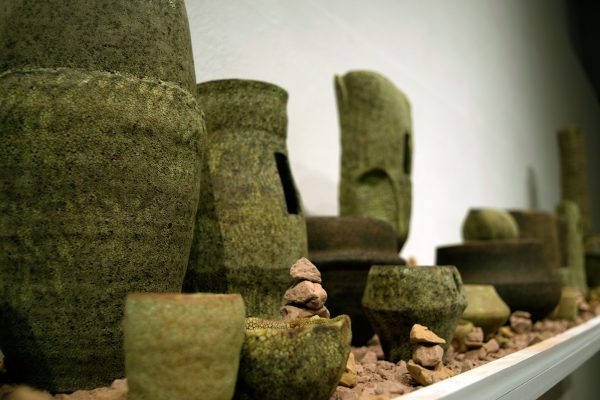
Temporality by David Kruk. Photo credit: David Kruk
“Clay is such a simple material. Even as a child, the tactility of it is so natural that anyone can put their hands in it and start molding something.” – Dame Magdalene Odundo
Between layers of soil and along the borders of a riverbed, humans have been finding clay to create with since the beginning of civilization. On a clear, windy Monday morning in mid-September, I joined Sanam Emami, associate professor of Pottery, to explore the possibility of finding local clay. The texture of sediment that had been washed down the Poudre River in the flooding of July 2021 is a distinct material, a deep tan color mixed with black ash and glimmering specs of mica. It is sticky, holding its shape over the river rocks, around the river’s bends, and in one’s hand. We walked the broad riverbank, the Poudre’s water a slow, soothing trickle, digging in the silty soil and searching for clay. To find clay, one needs simple tools: a bucket, a trowel, and a keen eye.
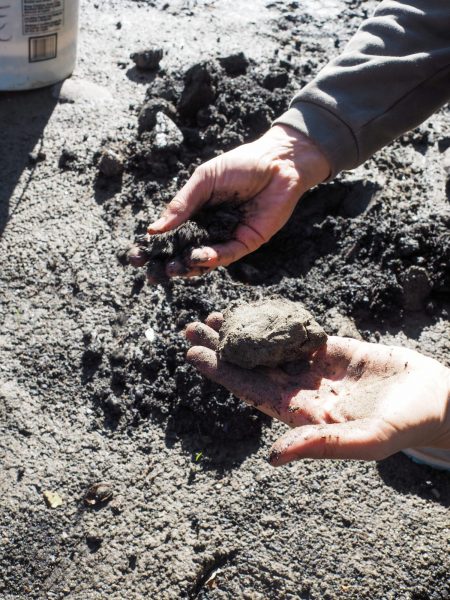
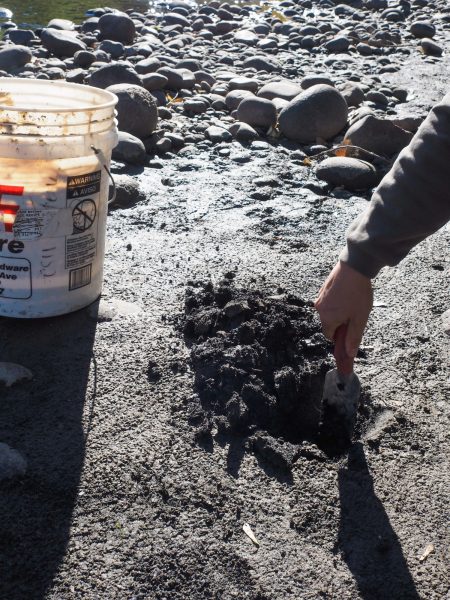
Sanam Emami explores sediment along the Poudre River, near Lake Watson in Bellevue. Photo credit: Shelby Skumanich
“You can find dry clay where the ground has hardened and started to crack apart. When you pick it up, it should be hard to break apart,” Emami says. “Wet clay is sticky,” she says as she rolls the soil from the riverbank between her fingers “and that stickiness can be readily shaped into a coil or a shallow bowl with your fingers.”
The work is simple and physical. Find the clay, dig the clay, take the clay home to process. To process clay, saturate with water, allow to sit. The clay will sink, as it is the heaviest of the particles, while the other material particles will drift to the top. Drain the water, strain the clay, and allow to dry and set into a thicker texture. From there, the human hand can begin to create forms for function and beauty.
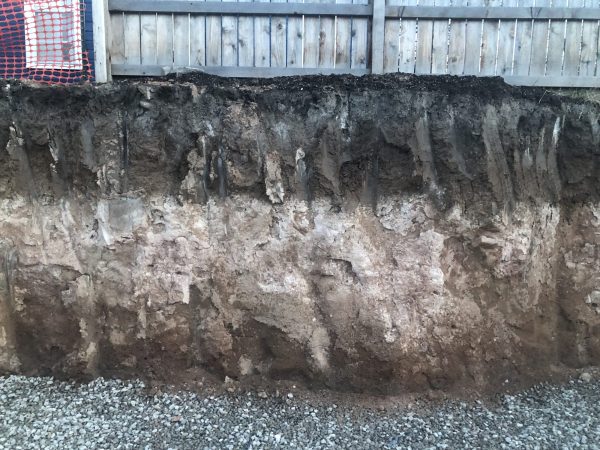
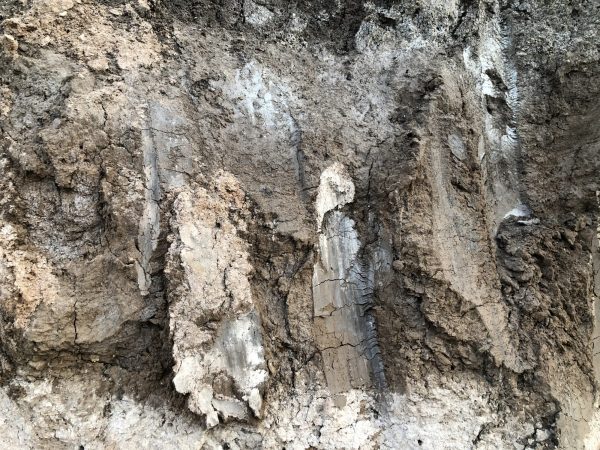
Clay layers at an idle construction site in Old Town, Sanam and friends dig clay. Photo credit: Del Harrow
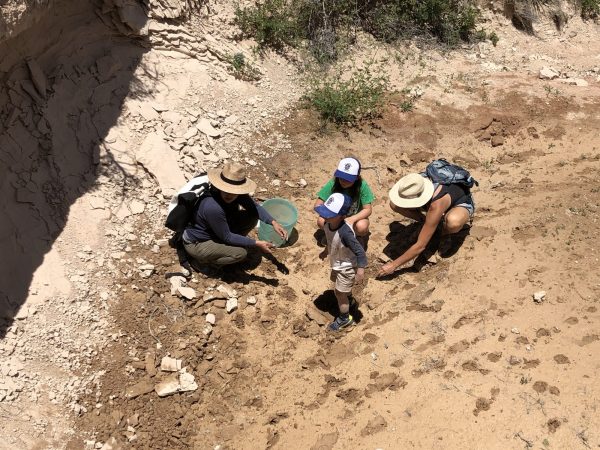
Clay is unique
Emami has started exploring the possibilities of local clays and how they differ from commercialized, highly processed clays that are sourced from manufacturers. Like the local food and fashion movements, many artists and craftspeople are turning to locally sourced materials. Be it clay from the construction site down the street, dye plants cultivated in one’s garden or foraged from the forests, many artists are examining their relationship to materials and their processes, asking questions about the sustainability of their choices. The cost of using commercially mined clay is enormous. Shipping materials across the world is expensive, both monetarily and environmentally. There are ethical concerns around how the material is extracted and mined. There is also loss of connection between objects and a sense of place. All of these are concerns of Emami’s from the perspective of both a maker and an activist.
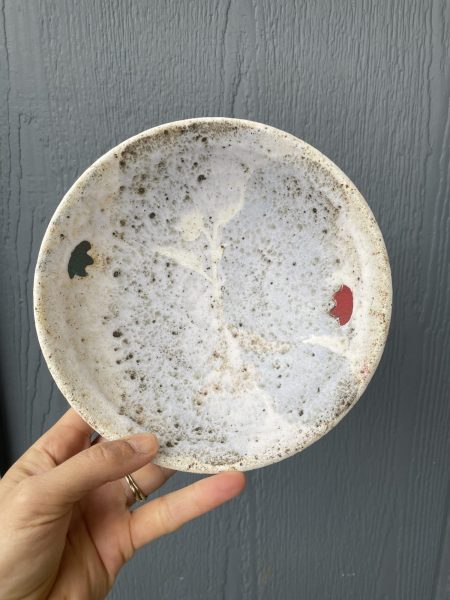
“When you're working with local clays, the quality and the character isn't consistent. There are elements of variety or imperfection. A few years ago, I decided that I wanted to reintroduce some of that imperfection back into my own work - to see if the unexpected results could help shift my thinking about my ideas and my pots. I also knew the students would love going out and digging clay. There's something about digging your own clay, processing it, firing it, which really changes your understanding of what this material is, why we are using it, and how it can connect us to both time and place.”
Using local clay to make functional objects ties its utility to place and provides a richer understanding of the connection between humans, place, and Earth. David Kruk, CSU alumnus and working studio artist, used local clay to build his senior capstone portfolio. The portfolio is a collection of vessels of varying sizes and shapes, ranging from bowls to vases, with a unique and pronounced texture. When displayed together, they suggest a landscape, born from the earth itself.
“I think collecting local clay (or any local materials for that matter) speaks to this idea of place. Working with locally sourced material helps develop what Richard Sennett calls "material consciousness." Since the rise of Modernism, the objects and materials we interact with every day leave us with a kind of alienation from how things are produced and what they are made of,” says Kruk. “For me, harvesting clay from the immediate environment is symbolic of reifying a lost agency over the world I'm embedded in. Its tactility pushes this idea even further with its ability to vitrify discreet moments in time through intimate handling of the material. Testing how the clay will fire, what color it will become, how flexible it is, to me is a sort of dialogue with the landscape itself.”
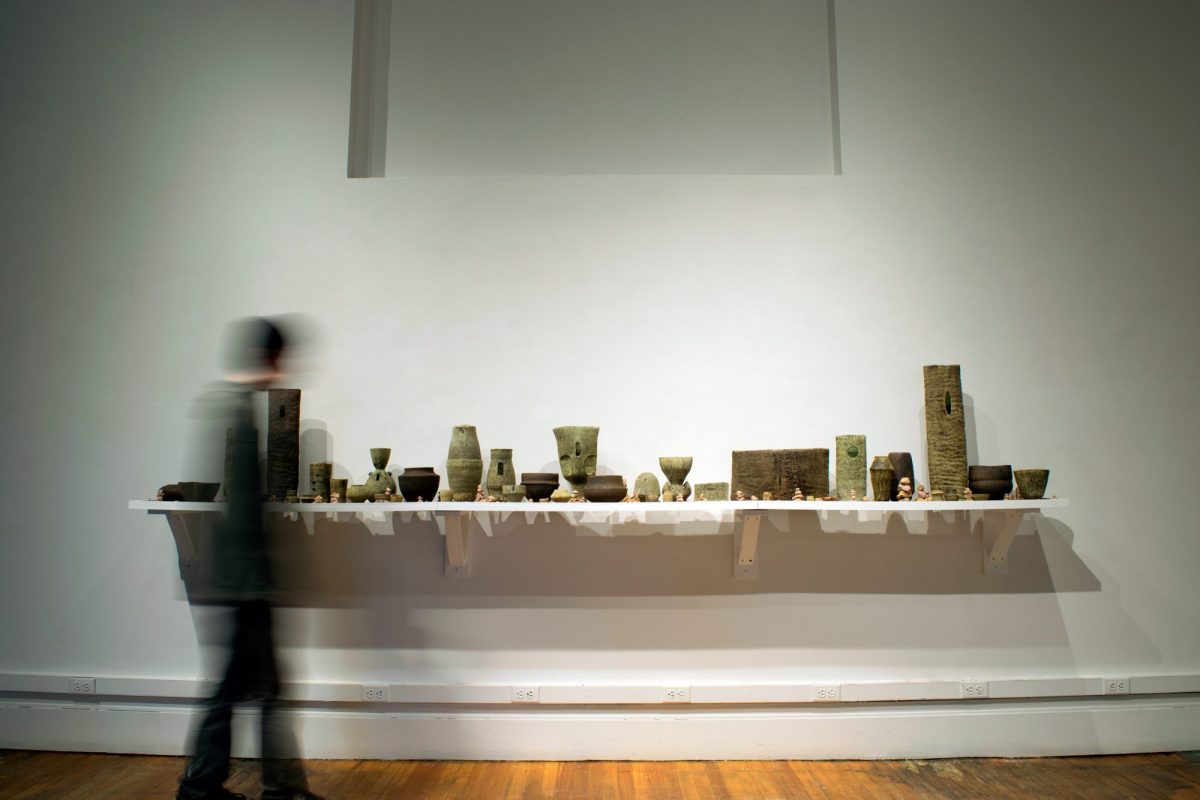
Clay is foundational
In February 2021, the Department of Art and Art History and the Gregory Allicar Museum of Art co-hosted Shattering Perspectives, an online symposium with Dame Magdalene Odundo, a Kenyan-born British studio potter, best known for her hand-built ceramics. The second day of the online symposium Dame Odundo was joined by Doug Dawson, collector and gallerist, and Dr. Suellen Melzer, professor of soil science, to have a conversation with Dr. David Riep, associate professor of art history, and Del Harrow, associate professor of pottery and sculpture. The panel was a fascinating interdisciplinary conversation about clay’s significance from scientific, anthropological, material, and artistic perspectives.
“Clay is important because it supports and is the foundation for life on earth, both physically and culturally. Civilizations are built from a very particular group of minerals that are less than 2 microns in size, which is fascinating to me,” said Dr. Melzer during the panel discussion. She also spoke of the molecular significance of clay and how the cycles of earth create this unique, malleable material.
On a molecular level, clay is complex and varied. According to Wikipedia's definition, clays are “hydrous aluminum phyllosilicate minerals, composed of aluminum and silicon ions bonded into tiny, thin plates by interconnecting oxygen and hydroxide ions. These plates are tough but flexible, and in moist clay, they adhere to each other. The resulting aggregates give clay the cohesion that makes pliable when wet and hard when dry.”
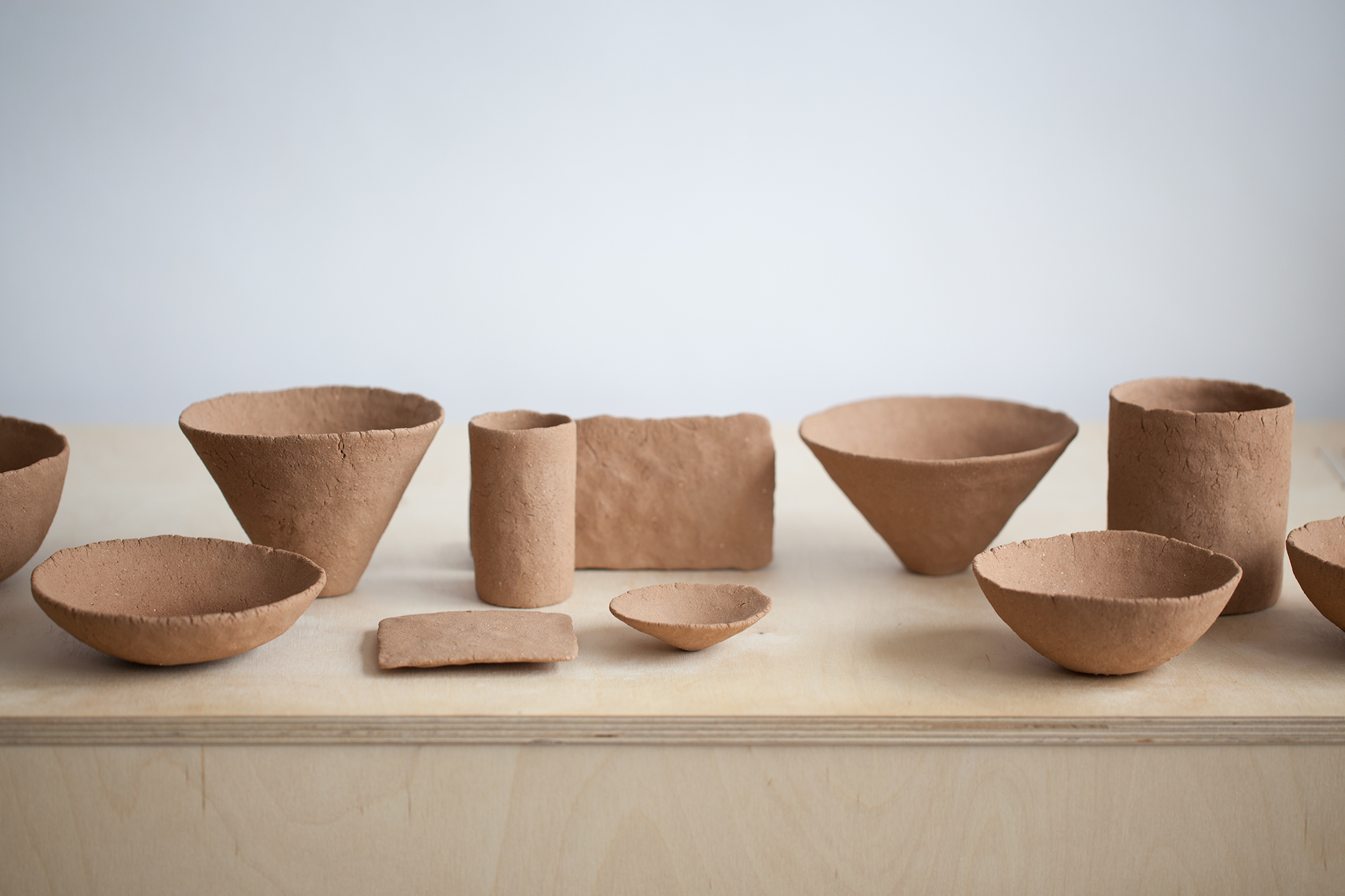
Clay is accessible
During the pandemic, Del Harrow wanted to give his students different ways of working with clay, even if they didn’t have access to the pottery studio at CSU. He explored the possibility of working with local clay and researching practices for harvesting it.
"Even though local clay can be found most places, the clays we use in the pottery studio have very specific properties and come from mines all over the United States. At the beginning of the pandemic, as everyone except essential workers was asked to shelter in place, it felt particularly urgent to find ways of making that were more local and self-sufficient,” he says.
“Most of the soil in Fort Collins has a large clay content but about 6' down there is a layer of very pure and plastic red clay. I started taking small amounts of this clay, filtering out the impurities with a window screen, and then making a series of small pinch pots. This ended up as a series of small pots but also a series of images and a video. I think of all of these parts as both artworks in themselves, and also instructional videos, demonstrating to our students the possibility of collecting and using clay from right in our own backyards."
We walk on clay every day, unaware of how deeply it connects us to human and geological history. The creation of clay is a process of deep time, where the passage of time is measured not in days or years but in centuries or millennia. Using local clay to create aesthetic and functional art deepens the connection between person and planet. It is a collaboration between place and the maker’s hand. Clay is the essence of the earth’s remarkable ability to support life and human endeavor. The borders it defines are not ones of law, government, and country but instead of nature, time, and space.
Navigating Borders
From water to dance, science to film, clay to gender, the liberal arts helps us navigate the borders in our lives that are physical, metaphorical, or cultural.
